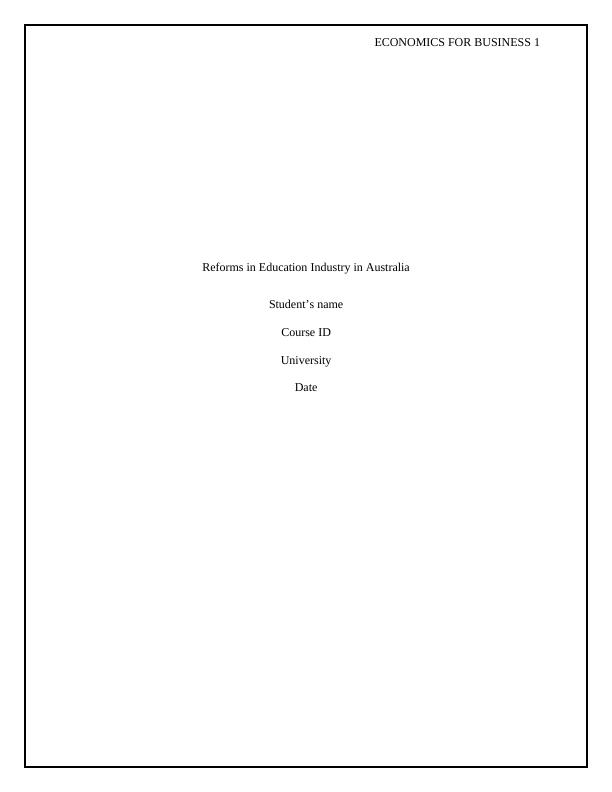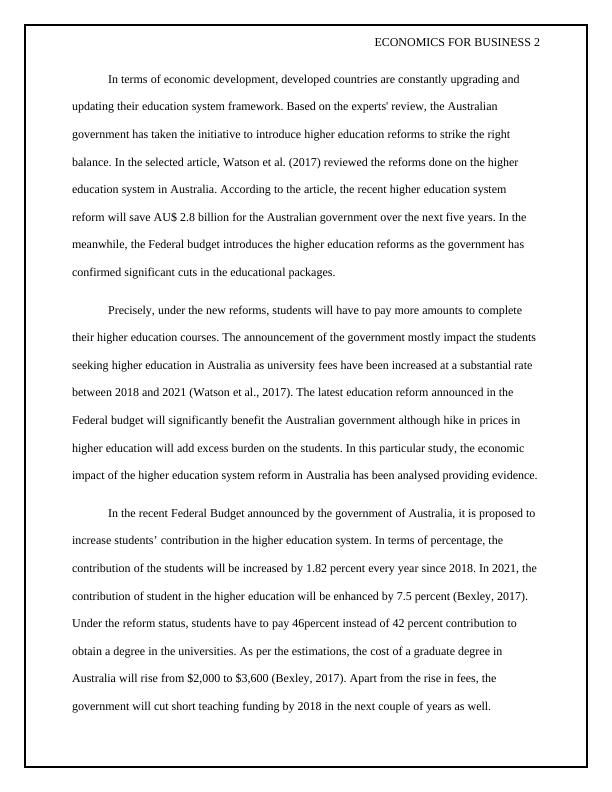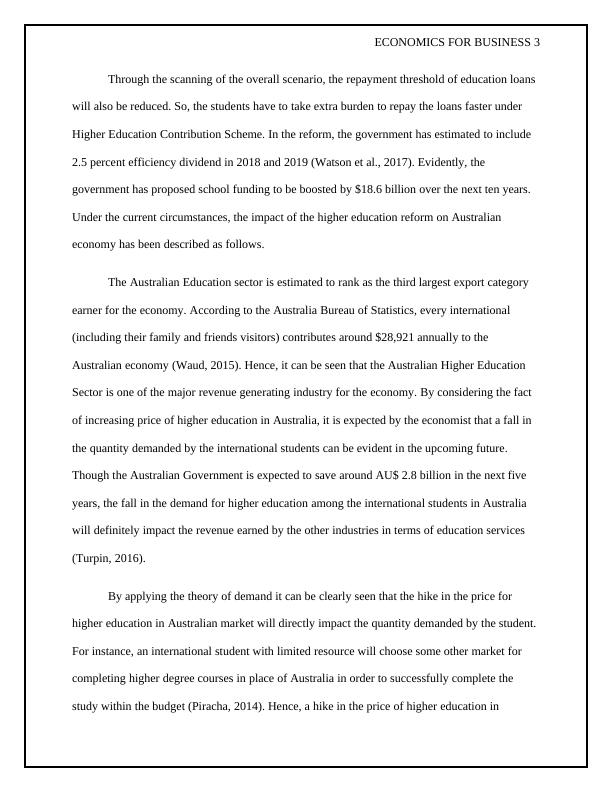HI5003 - Economics For Business- Report
8 Pages1543 Words52 Views
Holmes Institute Sydney
HI5003 Economics for Business (HI5003)
Added on 2020-03-01
About This Document
The below document discusses the the various concepts of microeconomics.The various concepts of the microeconomics which have been discussed in this report are "Monopolies, Duopoly and Oligopolies in Australia", "Demand and supply of certain resources in Australia" and more.
HI5003 - Economics For Business- Report
Holmes Institute Sydney
HI5003 Economics for Business (HI5003)
Added on 2020-03-01
ShareRelated Documents
End of preview
Want to access all the pages? Upload your documents or become a member.
Reforms in Australian Education Industry - Assignment - EDUF2006
|7
|1456
|41
EMV501 - Reforms in Australian Education Industry | Assignment
|7
|1490
|73
ECON 1005 - Reforms In The Australian Education Sector - Economics For Business
|8
|1360
|64
Higher Education Reforms | Article - SPD-500
|7
|1510
|67
Reforms in Australian Education Reforms
|5
|1365
|32
Economics of Business Assignment
|9
|1595
|182



